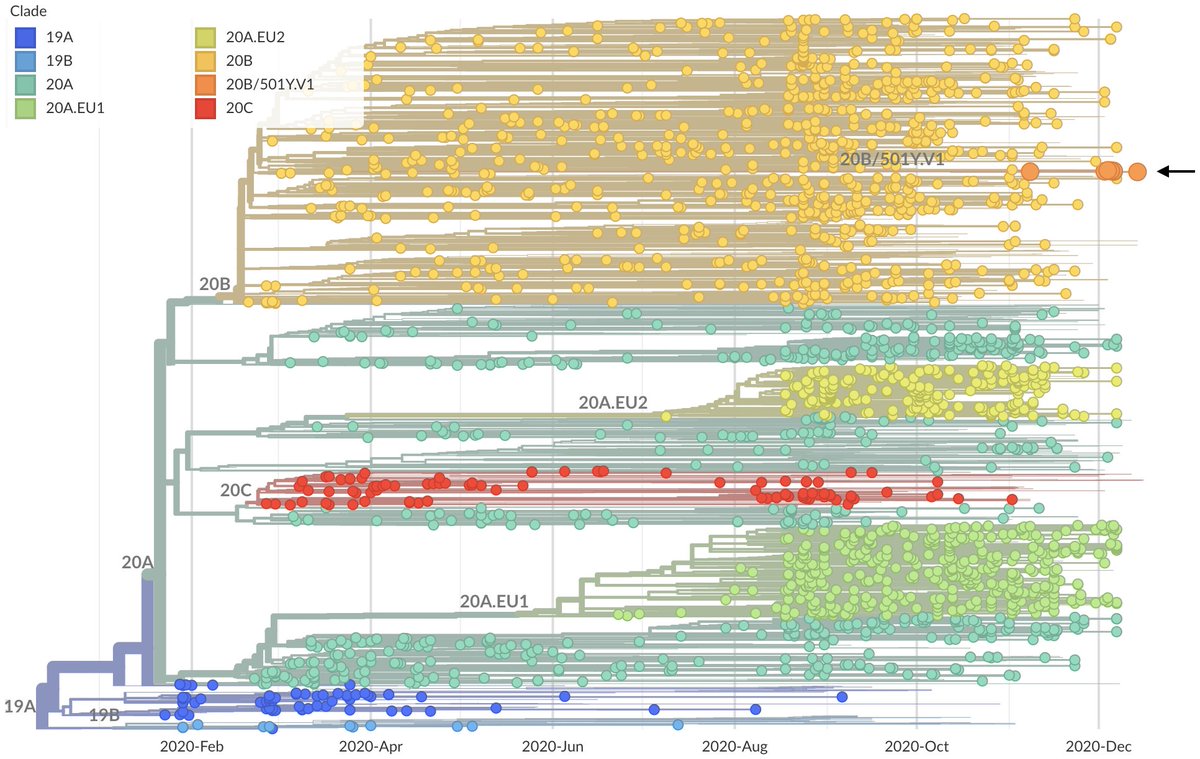
Given the large discrepancy in specimens collected in Dec that were sequenced and shared between the US and the UK, I wanted to follow up on the relative quality of genomic surveillance in the US and the UK. 1/12
https://twitter.com/trvrb/status/1341446482386292737
First thing to clarify, in the @nytopinion opinion piece yesterday (nytimes.com/2020/12/22/opi…), it's mentioned that "since Dec. 1, Britain has sequenced more than 3,700 coronavirus cases, compared with fewer than 40 cases in the United States, according to Trevor Bedford". 2/12
As of today, the UK has shared to @GISAID 23,377 genomes during Dec and the US has shared 8033 genomes. However, the UK turnaround time has been much faster with 5010 specimens that were collected in Dec shared vs 65 collected in Dec and shared by the US. 3/12
So, although the UK has sequenced and shared a total of 134k genomes during the pandemic and the US has sequenced and shared a total of 52k genomes, the UK has been much more timely in its sequencing. 4/12
Here, I've adapted a plotting style from @hamesjadfield to show specimen collection date in blue and sequence sharing date in yellow for US genomes. There are a great many specimens collected in the spring that are just now being sequenced and shared. 5/12 
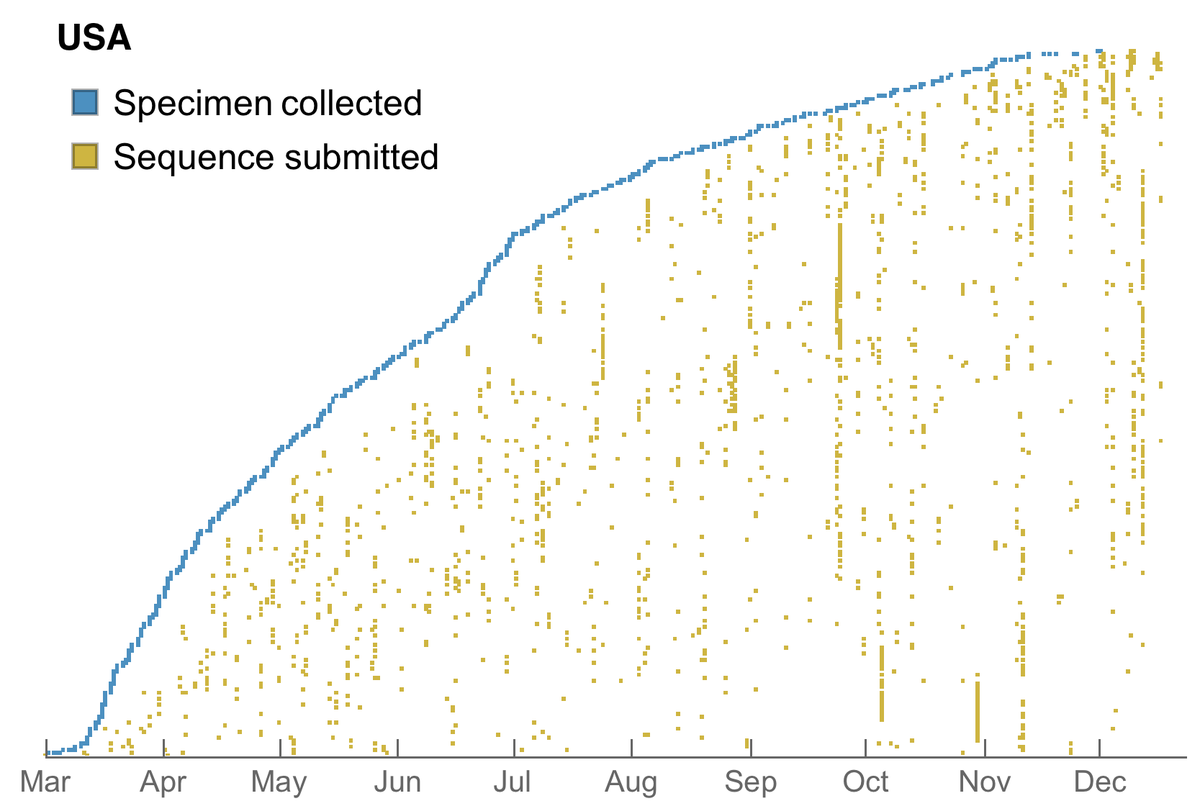
The average lag between specimen collection and sequence sharing in the US has been 98 days, although 15% of samples are sequenced and shared within 30 days of specimen collection. 6/12 
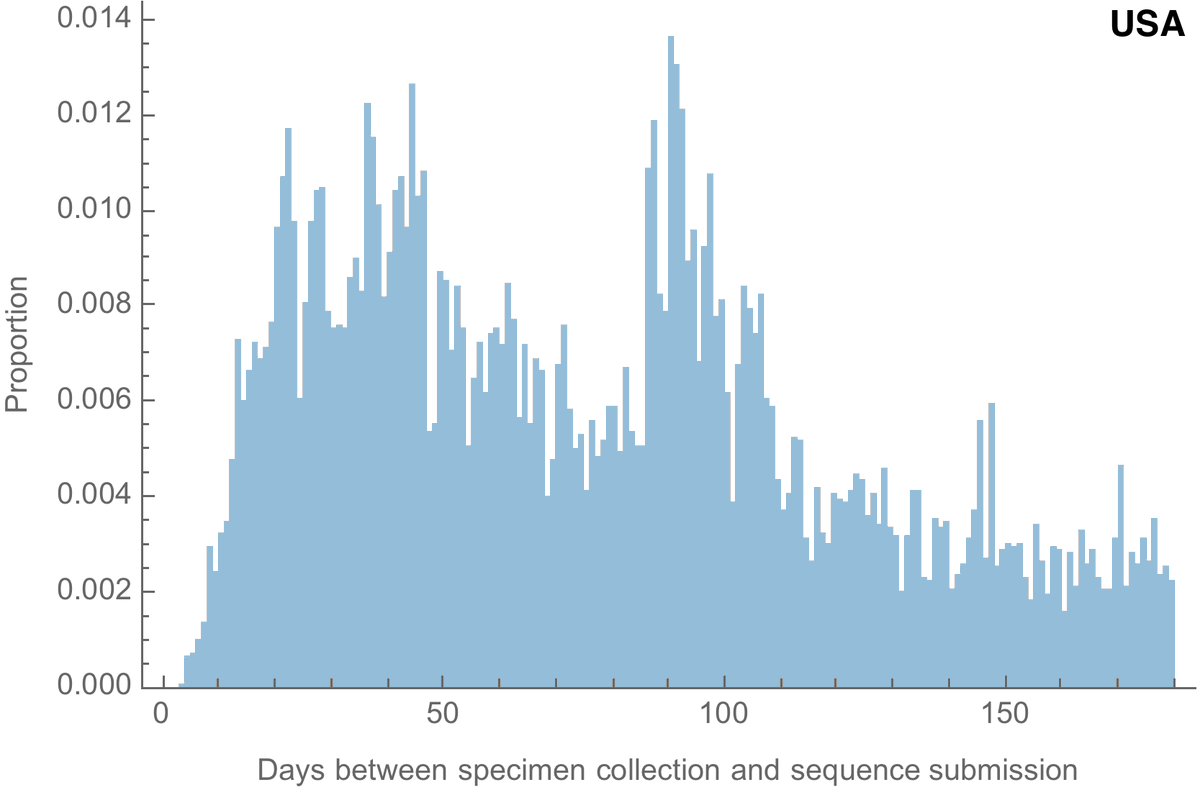
I wanted to look backwards and see if the US's current data level matches historical patterns. Here, I'm showing the number of genomes available from specimens collected in the previous 30 days through time. Recently, there are 100-300 sequences available. 7/12 
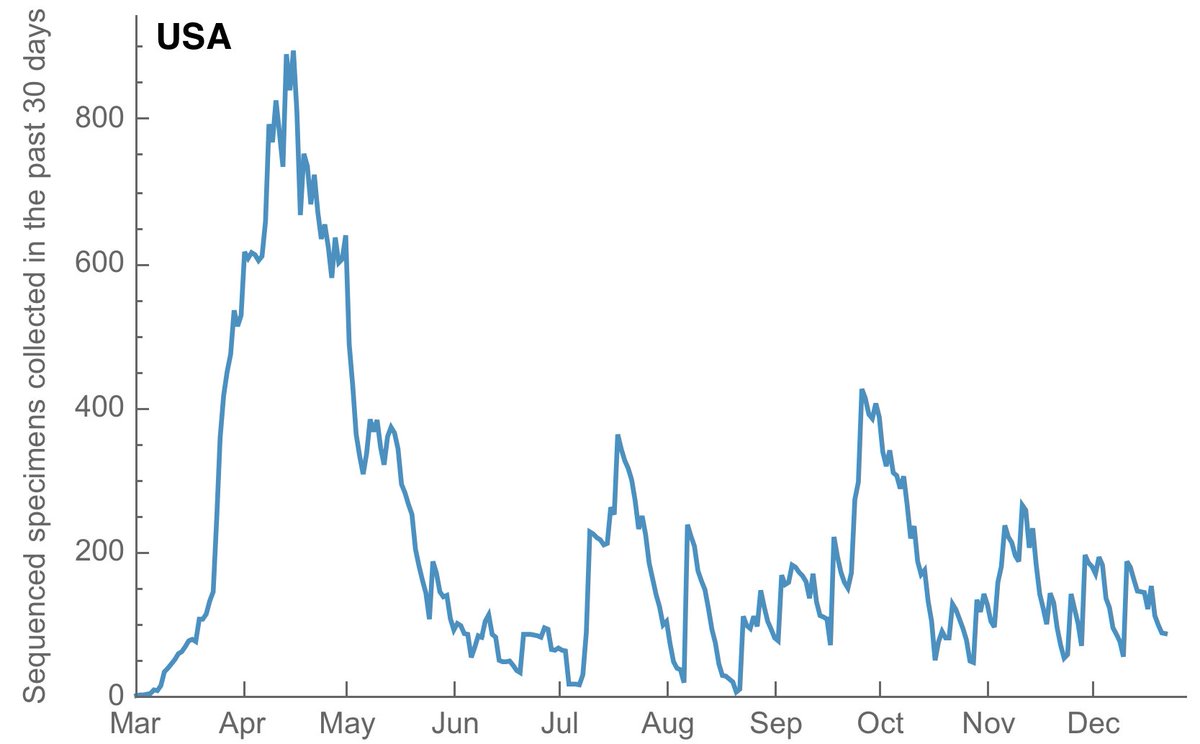
Comparing to the UK we see a clear difference. Here is the same plot of specimen collection date in blue and sequence sharing date in yellow for the UK. You can see that in the fall the UK made remarkable improvements to their timeliness of sequencing. 8/12 
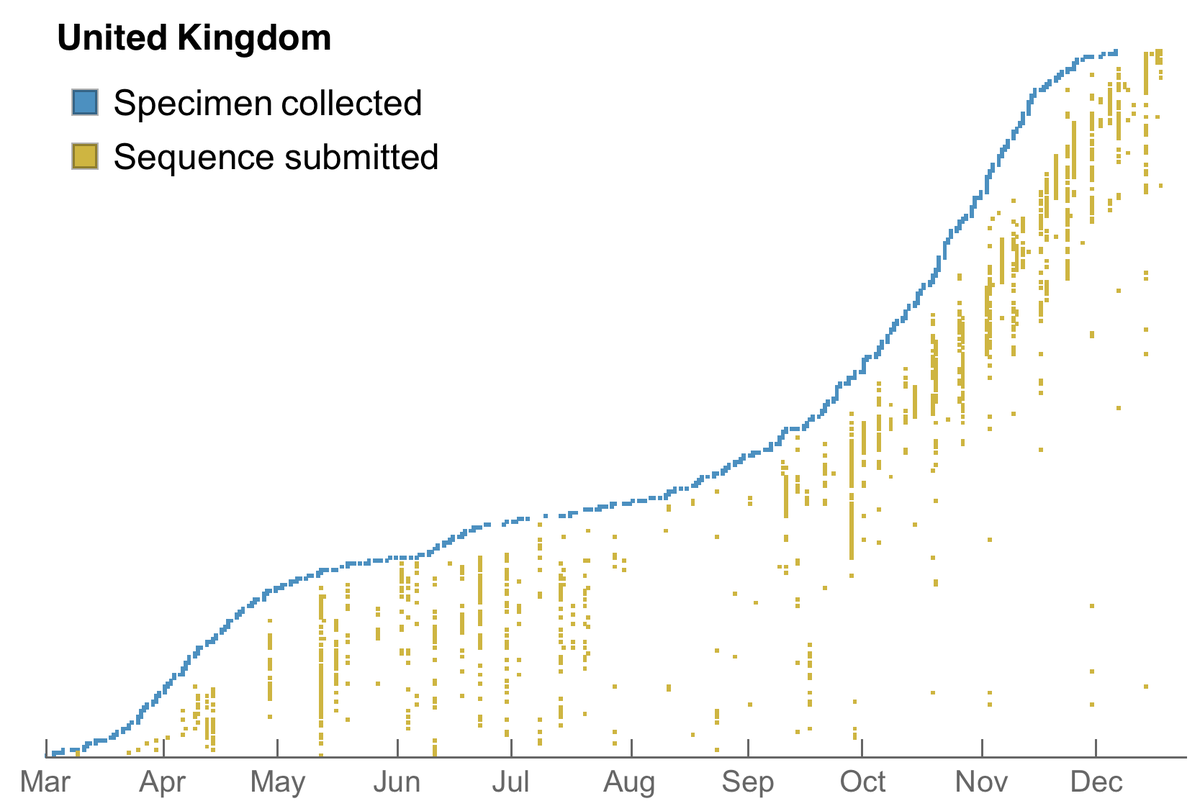
The average lag between specimen collection and sequence sharing in the UK has been 39 days with 59% of samples sequenced and shared within 30 days of specimen collection. 9/12 
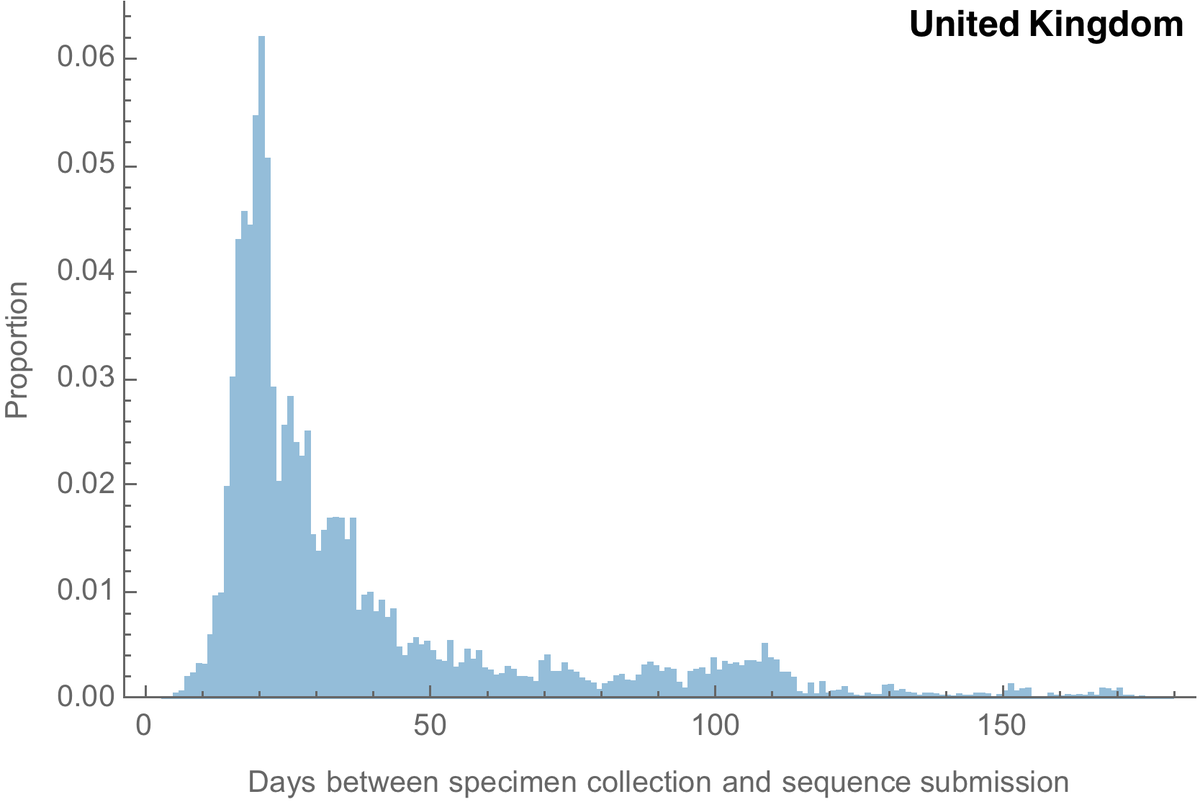
If we again look backwards at data availability, we see that starting in Oct the UK has thousands of genomes available that were collected, sequenced and shared within the previous 30 days. This is incredibly impressive. 10/12 
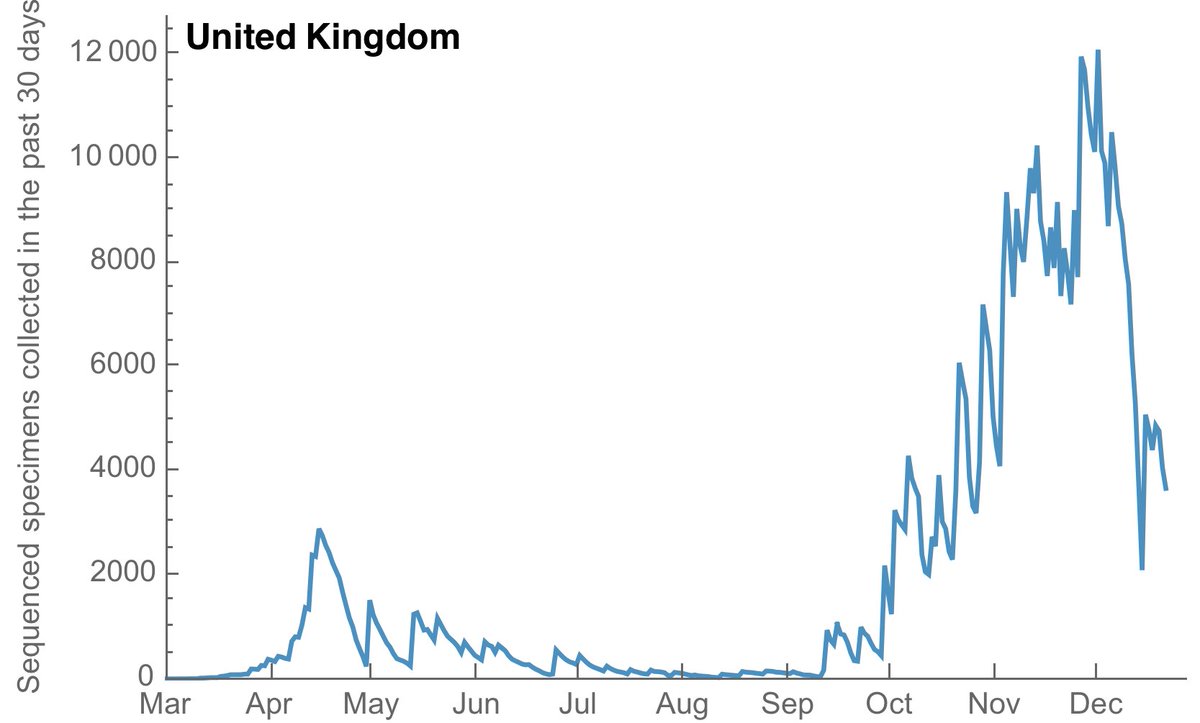
We can put these two lines on the same plot to see how stark the difference between timeliness of data availability in the US and the UK has been this fall. 11/12 
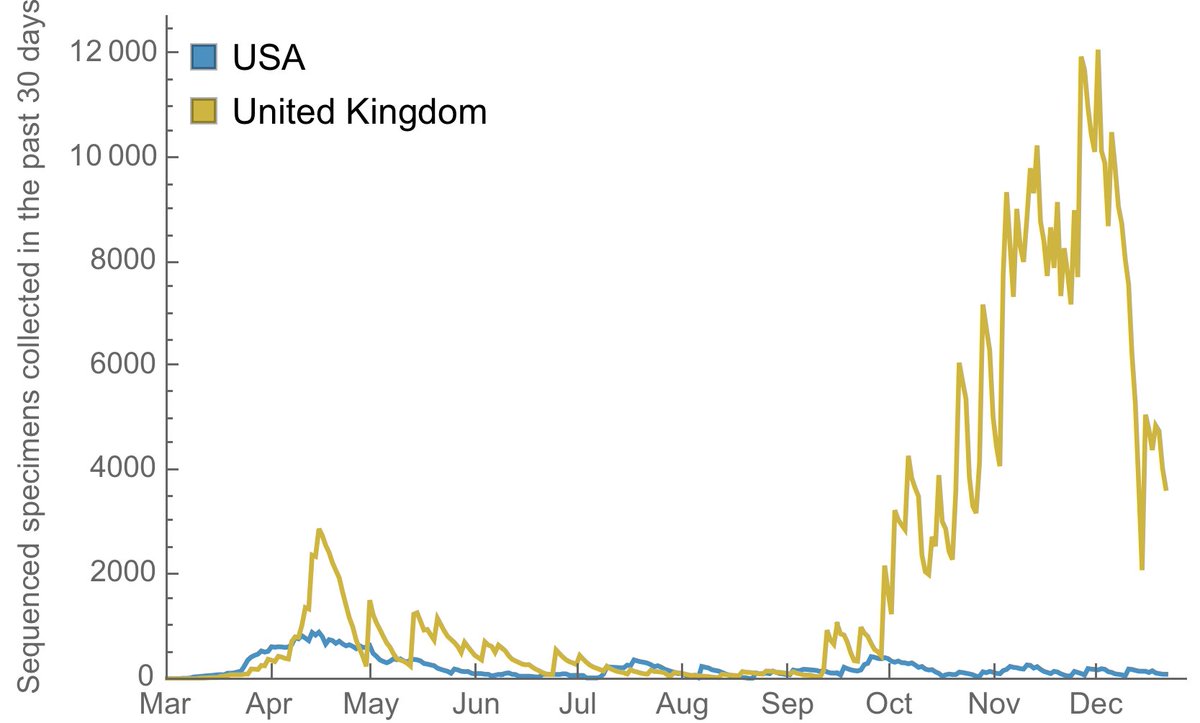
So, the core issue with US genomic surveillance is not volume but cadence. We absolutely need faster turnarounds between specimen collection and sequence sharing. @CovidGenomicsUK has shown what's possible. 12/12
• • •
Missing some Tweet in this thread? You can try to
force a refresh

